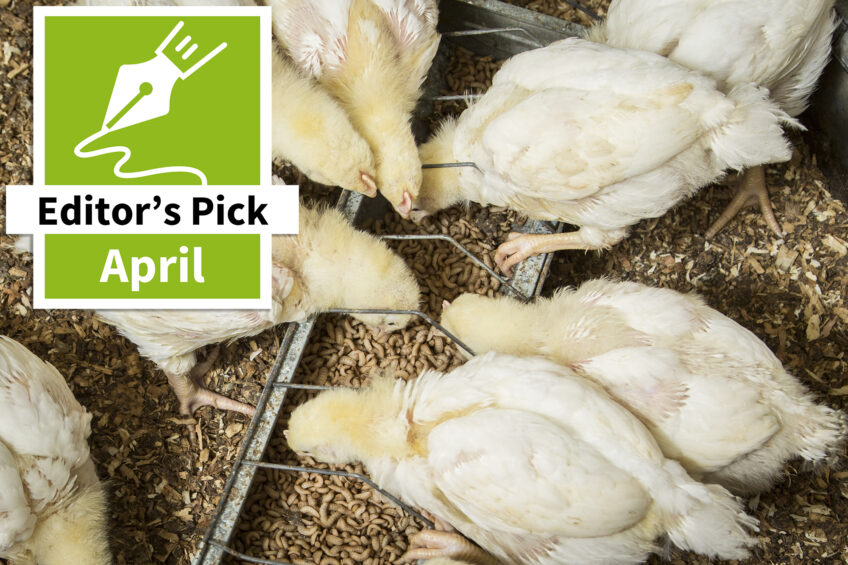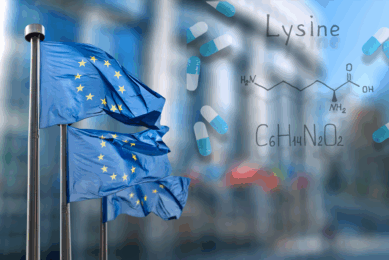Combination of polyphenols and functional amino acids in broiler diets

Although differing in magnitude, stressors are common in broiler farms during breeding, handling and transportation. This is why innovative solutions remain crucial for mitigating the damaging effects of stress on the health and welfare of birds. In their study published in Nature (2024), researchers indicate how a balanced diet supplemented with functional amino acids and polyphenols confers intestinal barrier integrity in broilers following stress exposure.
The gut acts as a sentinel in charge of controlled uptake of nutrients while preventing the passage of unwanted macromolecules and bacteria across the mucosa. These functions can be achieved by a complex cross-talk between the intestinal epithelial cells, the immune system and the microbiota. Gut microbiota play a key role in maintaining gut health and influencing overall performance. However, stressors can affect this sensitive balance and impair the transport of nutrients, the gut barrier function, and the immune response, representing a risk factor for digestive diseases.
4 pillars of gut health
For several decades, nutritional strategies in broilers have been designed to use feed-grade free amino acids associated with a low protein diet to reduce feed cost and environmental impact while maintaining performance. To date, findings also suggest that dietary amino acids could be used for their regulatory role in metabolism homeostasis, leading to the concept of functional amino acids, through which beneficial contributions to gastrointestinal integrity and the immune system can be achieved by increasing specific amino acid concentrations above what is needed for production performance. The protective effect of functional amino acids on the digestive system during enteric challenges is related to their targeted actions on the 4 pillars of gut health:
- oxidative stress,
- epithelial functions,
- microbiota and
- immunity.
On the other hand, polyphenols have been shown to exert antibacterial, antioxidant, immunostimulatory and prebiotic properties. In the current study, researchers evaluated the use of specific amino acids in combination with grape extract polyphenols with the expectation of an effective association because of:
(i) the polyphenols’ separate beneficial effects on the gut microbiota and epithelium and
(ii) through the binding of amino acids to tannins, ensuring the protection of amino acids degradation in the upper side of the digestive tract.
Inducing stress in broilers
Because broilers experience higher needs for functional amino acids when facing intestinal challenges, identifying nutritional solutions to optimise the benefits of amino acids is of particular interest. In this study, the effects of supplementation of arginine, threonine and glutamine together with grape polyphenols on the gut integrity and functionality of broilers facing stress conditions were evaluated. The stress was induced by administering corticosterone (CORT), the primary corticosteroid in birds produced during the stress hormonal cascade. Birds were randomly allotted to 3 experimental groups:
- Control diet: a standard diet with no stress challenge or additive
- CORT diet: a standard diet with a corticosterone challenge
- CORT+MIX diet: a standard diet supplemented with 1 g per kg functional amino acids (arginine, threonine, and glutamine) together with grape extract polyphenols and challenged with corticosterone.
Growth performance
Growth performance measured during the grower phase led to a decrease in body weight of 21% following the corticosterone challenge compared to the control birds. However, the addition of the mixture of amino acids and polyphenols improved the weight of the challenged birds by 6%. During the finisher period, the differences were minimal.
Intestinal permeability and integrity
As expected, researchers observed an increase in gut paracellular permeability after the administration of exogenous corticosterone in drinking water in non-supplemented animals. This was associated with a downregulation of genes coding for tight junction proteins and the gene coding for mucin 2, the glycosylated protein that forms a physical barrier, which protects epithelial cells from stress-induced damage. However, to fully comprehend gut permeability, researchers suggested that a transversal gene expression panel related to intestinal health (genes for barrier function, immune response, oxidation, and digestive hormones) could be used in the future to better capture this complexity.
In the current study, gut permeability was assessed by measuring the amount of fluorescently labelled dextrans (FITC-d). The supplementation of amino acids and grape extract polyphenols suppressed the long-term adverse effects of CORT challenge on intestinal permeability as indicated by a decrease of plasma FITC-d, normalising the gut paracellular permeability.
The mucus layer is composed of highly glycosylated proteins called mucins that act as a protective layer on the epithelial cell lines, thus strengthening the physical and chemical gut barrier. In the current study, the addition of amino acids with polyphenols in the diet restored the secretion of mucin-2 as indicated by an up-regulation of MUC2 gene expression shortly after the CORT challenge. “This effect could be partly related to the threonine supplementation, as this amino acid is directly involved in mucin secretion through regulations of MUC2 transcription,” the researchers concluded.
Gut morphology and microbiota
Compared to the control birds, the challenge with corticosterone caused adverse effects in the crypt structure, which was measured at the end of the finisher phase. These negative effects were counteracted with the supplementation of the mixture of functional amino acids and polyphenols, indicating higher epithelium proliferative activity with the supplementation.
At day 35, the relative abundance of bacteria belonging to the genus Roseburia was significantly lower in the CORT group compared to the control group while its abundance was improved in the CORT+MIX group. Other genera remained unaffected by the dietary treatments. Roseburia
intestinalis is an anaerobic, gram-positive, slightly curved rod-shaped flagellated bacterium that produces butyrate in the colon, thus, R. intestinalis has been shown to prevent intestinal inflammation and maintain energy homeostasis by producing metabolites.
“Since our findings did not show strong modulations of the gut microbiota with polyphenol supplementation, further experimental dysbiosis models would be appropriate to investigate the role of the gut microbiota, mediated by polyphenols and functional amino acids.”
However, they added that polyphenols and arginine can both exhibit antimicrobial activities, while glutamine contributes to oxidative defence as reported in similar polyphenol studies. Besides these independent benefits, previous evidence suggests that polyphenols could positively interact with amino acids’ intestinal functions by targeting the large intestine, as polyphenols are poorly absorbed in the small intestine and therefore represent substrates available to the lower tract of the intestine, they said.
Concluding remarks
The administration of amino acids together with polyphenols was shown to protect birds from corticosterone challenge, especially the long-term adverse effects on the gut barrier function.
“The bioactive compounds tested seemed to directly act on the intestinal mucosa functions barrier, by stimulating wound healing processes such as restoration of crypt depth, enhancing mucus gel secretion and by normalising pro-inflammatory cytokine gene expression levels.”











